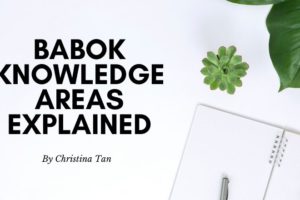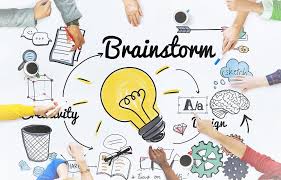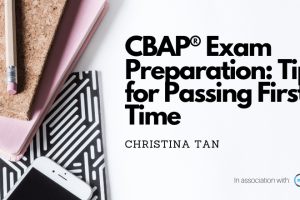
How to create Business Requirements Document (BRD)?
BRD (Business Requirement Document) Definition
A business requirement document or BRD is a crucial part of any major project. It’s often written based on the template of the website, particularly in big corporations that can differ from one industry to another, and which may have been in use for several years. However, businesses change quickly so the template you’re utilizing might not be ideal and if you work for a start-up business, you might not even have the template to start. Thus, here are some tips on how to create BRD. Remember, getting the BRD is an important factor in thriving projects.
Contrary to famous belief, a BRD isn’t only about the technology utilized to develop systems; it’s a reference manual for every function to comply with for comprehensive reporting, support and compliance along with regulatory guidelines.
But what makes a perfect BRD and how do you create BRD?
What is a Business Requirement Document (BRD)?
A Business Requirement Document (BRD) focuses on the business perspective because it holds the main points of the business solution for a project. Business requirements document additionally emphasizes on the requirements and expectations of the client. In easier terms, BRD indicates what the business needs to realize. The BRD indicates all the project deliverable and therefore the inputs and outputs related to each process function. The process function is liable for Critical to Quality (CTQs) parameters that relate to the requirements and desires of the client. CTQs are liable for a positive Voice of Customers (VOC). VOC describes the customer’s feedback regarding their experiences along with your merchandise or services. BRD focuses on the business objectives and distinguishes between the business solution and technical solution.
Objectives of BRD:
- To get an agreement among stakeholders
- To provide a foundation to communicate to a technology service provider what the solution needs to do to satisfy the customer’s and business’ needs.
- To determine and provide the input to the next phase of the project
- Explain in detail the needs of the customer and business that the solution intends to meet
Why is BRD Needed?
A complete and correct description specifying what the ultimate project deliverable should appear as if once completed and accepted is crucial to a project’s success. The project team members can perform a systematic investigation approach to extract, capture and record those capabilities so as to develop the outline utterly. This can be primarily written and maintained by stakeholders to solve an issue or achieve an objective. The formally approved Business Requirement Document becomes the basis for the Project’s design and development efforts.
Who Should Get Involved in the Creation of the BRD?
- Project core team
- Business partners
- Process owners or representatives
- Subject matter experts
- Project/product management, quality department and/or IT management as needed
BRD Template
The structure of the BRD template may vary according to the project requirements. The basic BRD template is mentioned below.
- Summary
- Objectives
- Background
- Scope
- Features
- Financial statements
- Functional requirements
- Personnel requirements
- Reporting and quality assurance
- Delivery schedule, timeline & deadlines
- Other requirements
- Assumptions
- Limitations
- Risks
- Cost & Benefit
Summary
The summary is the outline of the business requirement of the project.
Objectives
A precise definition of what needs to be done, improved or changed; what concerns need to be solved. Each other elements of the document and the whole project must refer back to the business objectives every time making on including features in the project.
Background
Background should comprise information about the business, current business practices, and the business need that underlies this document.
Scope
The project scope mentions what should be included and what should not be included. When identifying what is in scope for a certain project, it’s crucial to identify what can’t be improved or changed by the project. Identifying the scope offers realistic expectations for the stakeholder and prevents the situation where the single project is striving to solve all issues for everybody.
Features
This is the place to be more descriptive of what work would be created from a user perspective.
Financial statements
The financial statements indicate the impact of the project on the company’s balance sheet and revenue over the specific period of time. This also holds the information on the funding of the project and how it would be done.
Functional requirements
The functional requirements will describe what the user of the end product or service sees. This section provides the functional requirements and corresponding features including diagrams, charts, and timelines. You may add subsections for user requirements, data flow diagrams and flowcharts or similar types of information.
Personnel requirements
This section covers the human resources aspect of the project. Who needs to be hired and when the hiring needs to be done. It also includes the cost of the resources. Include enough detail to address what those needs are in the context of the rest of the project, and how they will be met.
Reporting and quality assurance
The Reporting and Quality Assurance section will provide an outline of how progress of the project is being measured and assessed along the way.
Delivery schedule, timeline & deadlines
Each phase of the project should be explained in detail in this section. This helps to make sure that all stakeholders are aware of the requirements and when it will be necessary. Include both final deadlines and timeline in this section
Other requirements
Think about such things as interface requirements between old and new systems, data conversion requirements where appropriate, hardware and software requirements when incidental to the rest of the project, operational requirements if not already discussed above.
Assumptions
It’s crucial that clients, end users, other stakeholders and anyone else affected by the project are assisted to document their assumptions. Did you know those unspoken assumptions could sometimes be the cause of issues in projects? So perform a careful analysis to create a complete list of assumptions. Identify assumptions that you have made about the business operations, and other details. This allows easier identification of wrong assumptions before they put an entire process off track. The assumptions outline anticipated events that would occur during the course of the project.
Risks
Every project has inherent risks that may cause delay or even failure of a project. You must identify the risks to show you know what they are, and also identify ways in which you would mitigate those risks. Remember that no project is without risks- some could be predicted and some may happen unexpectedly; however, either way, it’s vital to acknowledge this so that risk management process, as well as contingency plans, could be put in place.
Cost & Benefit
This section holds a list of all the costs involved in the project along with the cost-benefit analysis. The savings from the project are also listed here.
BRD Prerequisites
- Project charter that is made throughout the outline section of a project. The BRD provides the chance to review the project charter to make sure that the target, goals, scope, project team, and approvers area unit accurately reflected.
- Current environment assessment created during the measure phase. This includes in depth process map of the current environment highlighting areas that will be modified during the project. Process maps should include:
- Properly outlined start and end points of the process
- Level two and three process functions
- Defined areas of rework and non-value added steps
- Cycle time, capacity and rework information for each process step as available
- Baseline for every CTQ for the current environment
- CTQs which are identified in either the define or measure phases, and validated with baseline measurements, targets and specifications.
- Data that defines and describes current performance.
- What is the aim of the product/service? If there was never any variation within the product/service, this would be the constant value.
- How much variation is that the customer willing to tolerate in the delivery of the product or service? Outline higher and lower specification limits as required by the customer needs.
- How often are the producers willing to produce a product/service outside the specification limits?
- Target environment assessment, created in the measure phase, and includes an in depth process map of the target environment including level two functions. After distinguishing between level two or three functions, group the process functions into the following categories.
- People: People are processing information and making decisions [core team designs high-level design/low-level design (HLD/LLD)]
- Systems: Systems is processing information and making decisions
- Fishbone: For each process function for impact assessment
Diagrams to be Added in BRD
System Context Diagram
System context diagram shows the central system beneath design and the primary ways that data flows in and out of the system. The accounting system, internal system, email server, document management system, these all provides, how information goes back and forth between the central portal, which was the system under design, and then the other related systems. This is useful in the BRD because it can help you to show the big picture of the system and how it fits together with everything else in your organization.
Business Process Diagram
This diagram shows the big picture of how the process related to the requirements in your BRD. If your BRD is comprehensive and includes all the requirements, you might include a workflow diagram for each key section of requirements that, essentially, is showing how those requirements fit together.
Scope Model
This diagram shows how you organize the requirements. Find a way to functionally organize the document and show how the business requirements or functional requirements fit within that and decompose the overall structure of your documentation.
How to Write a BRD?
- The first step is to gather information through group action and interviews with varied sources, together with developers, customers, engineers and end-users. The collected information ought to be documented in an exceedingly clear and elliptical manner, acquainted to the business user, to make sure successful product development and high-quality end-product. Documenting the ion permits the author of the document to spot any conflicting steps early within the lifecycle of the project.
- The second step is to explain the key attributes of the product to offer an idea of how the end-product should be to meet the customer needs.
- The third step is to obviously state the scope of the project, so as to avoid poor management and to provide guidance to the developers to fulfill the key objectives.
- The fourth step is to spot the phases of the project. By making sure that the key objectives and goals can be met, the project manager to achieve a proper agreement with the stakeholders.
- The fifth step is that the correct analysis of the project with the utilization of an in depth process map. All the phases of the project are described with the beginning and end points of every process, any changes needed in specific areas, the cycle-time and capacity of every step of the process as well as each Critical-to-Quality (CTQ) step. The goal during this stage is that the identification of any necessary changes to fulfill the key objectives.
- The sixth step is to incorporate an impact assessment diagram to spot the possible impact on the processes, the technology used, the individuals concerned, the product, or perhaps the facilities and also the machinery and equipment of the organization.
Key elements of a BRD
The author of a Business Requirements Document – a business analyst or a project manager – should have a thorough understanding and knowledge of the business processes and the key objectives of the project to make sure proper implementation of different requirements and different elements within the requirements.
The most important element of a BRD is the scope of the project, which includes any restrictions and constraints that need to be considered during the development process. The scope is a functional requirement that basically answers three questions:
- What is the problem that the organization needs to solve?
- What are the restrictions that need to be considered?
- Is the time and money invested in solving the problem worthwhile?
BRD Checklist
It is very important and helpful to create a checklist. Here is a sample checklist below.
- Specific and unique requirements
- Measurable and achievable requirement
- Realistic and time bound requirement
- Unambiguous and complete requirement
- Prioritizing requirements
- Requirement dependencies
- Indexation and referencing



